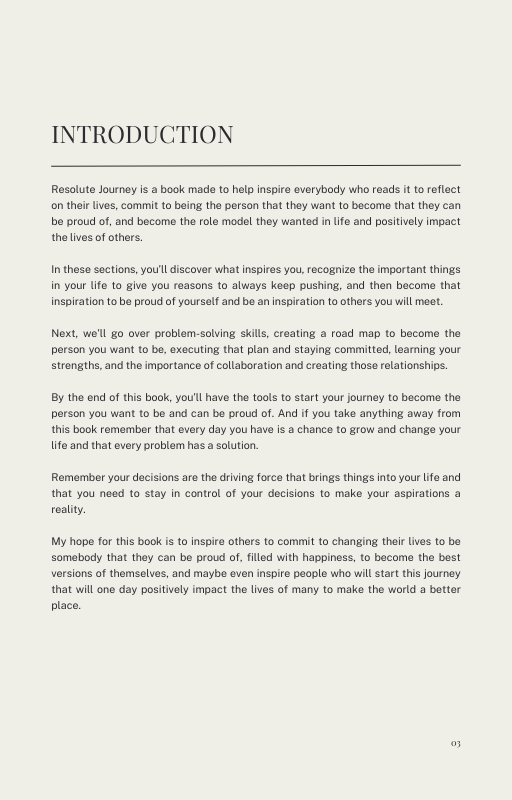Introduction
Goal setting is a powerful practice that has been used by successful individuals, entrepreneurs, and organizations throughout history. From setting personal objectives to achieving professional milestones, the art of goal setting plays a crucial role in shaping our lives and driving us toward success. In this comprehensive guide, we will explore the science and psychology behind goal setting, practical tips for setting and achieving your goals, and the transformative impact it can have on your life.
The Psychology of Goal Setting
Understanding the psychology of goal setting is crucial to mastering the art. Humans are hardwired to seek purpose and direction in their lives. Setting goals provides a sense of purpose and a clear direction to follow. Psychologically, goal setting taps into the brain's reward system, releasing dopamine when we make progress or achieve our goals. This positive reinforcement encourages us to keep pushing forward.
The Importance of Setting Clear Goals
Setting clear and specific goals is a fundamental principle of goal setting. Vague, ill-defined goals are like trying to hit a moving target blindfolded. To be effective, your goals should be SMART: Specific, Measurable, Achievable, Relevant, and Time-bound. This clarity not only provides focus but also makes it easier to track your progress.
Check out our blog post about the SMART way HERE.
Short-Term vs. Long-Term Goals
Different types of goals serve different purposes. Short-term goals are like building blocks, creating a path to your long-term objectives. In this chapter, we delve into the importance of balancing short-term and long-term goals, and how they work in harmony to propel you towards success.
Setting Personal and Professional Goals
Goals are not limited to your career or professional life. Setting personal goals, such as improving your health, learning a new skill, or enhancing your relationships, is just as important. This chapter discusses how to strike a balance between personal and professional goals for a fulfilling life.
The Power of Visualization
Visualization is a powerful technique that can supercharge your goal-setting efforts. When you visualize your goals, you engage your brain in a process that makes your objectives seem more attainable. We explore the science behind visualization and provide practical exercises to help you implement this tool effectively.
Overcoming Obstacles and Challenges
Goal setting is not without its challenges. In this chapter, we discuss common obstacles that can hinder your progress and how to overcome them. From self-doubt to external setbacks, you'll learn strategies to stay on track and resilient in the face of adversity.
The Role of Accountability
Accountability is a key element in achieving your goals. Sharing your goals with others, seeking mentorship, or utilizing apps and tools can help you stay accountable. We'll explore the various ways to introduce accountability into your goal-setting process.
The Art of Prioritization
Not all goals are created equal. Learning to prioritize your goals is essential for success. This chapter covers techniques for identifying and ranking your goals according to their importance and urgency.
Setting Realistic and Stretch Goals
Balancing between setting realistic goals and challenging yourself with stretch goals is an art. We delve into how to find the sweet spot between these two approaches to ensure you're continuously growing and achieving.
The Role of Time Management
Time management is the backbone of successful goal setting. We discuss various time management techniques and strategies that can help you make the most of your days while working towards your goals.
Celebrating Milestones and Success
Recognizing and celebrating your achievements is an often overlooked aspect of goal setting. We explore why acknowledging milestones is essential for motivation and how to do it in a meaningful way.
Goal Setting in the Digital Age
The digital age has brought new tools and challenges to the art of goal setting. This chapter delves into how to use technology to your advantage while avoiding the pitfalls of constant distraction and information overload.
The digital age offers numerous opportunities and challenges for goal setting. By harnessing the power of digital tools, embracing online learning, fostering collaboration and accountability, and managing information overload, you can make the most of this era and use it to your advantage in achieving your goals. Adaptation and balance are key in mastering the art of goal setting in the digital age, ensuring that technology enhances, rather than hinders, your path to success and personal fulfillment.
The Impact of Goal Setting on Well-being
Setting and working towards your goals can significantly impact your well-being. We discuss the positive effects on mental and physical health, and how it can lead to a more fulfilled life.
Continuous Improvement and Adaptation
The art of goal setting is not a one-time process but a lifelong journey. We explore how to adapt, refine, and grow with your goals to ensure you continue to move forward, even as your priorities change.
The Transformational Power of Goal Setting
In the final chapter, we reflect on the transformational power of goal setting. From the pursuit of personal growth and happiness to achieving professional success, goal setting has the potential to completely revolutionize your life.
Conclusion
The art of goal setting is a lifelong endeavor that can lead to personal and professional success, improved well-being, and a more fulfilling life. By understanding the psychology behind goal setting, setting clear objectives, balancing short-term and long-term goals, and employing effective strategies, you can unlock your full potential and truly master the art of goal setting. It's time to take control of your destiny and start setting and achieving the goals that will shape your future.




